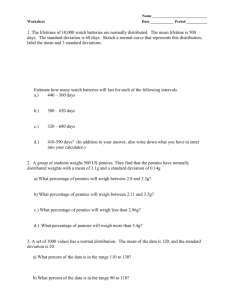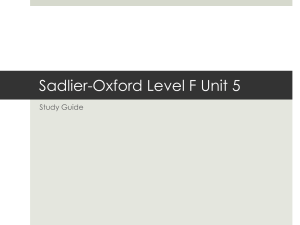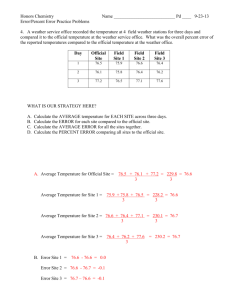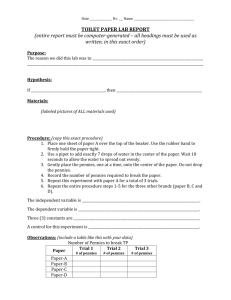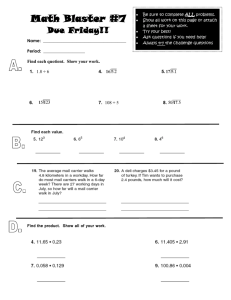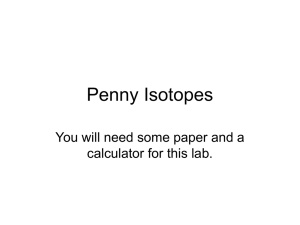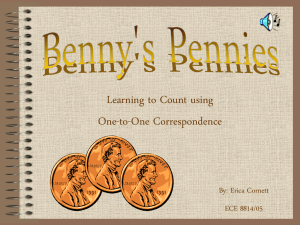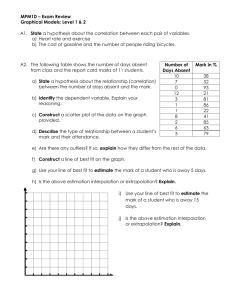Amassing a Penny's Worth Lab
advertisement
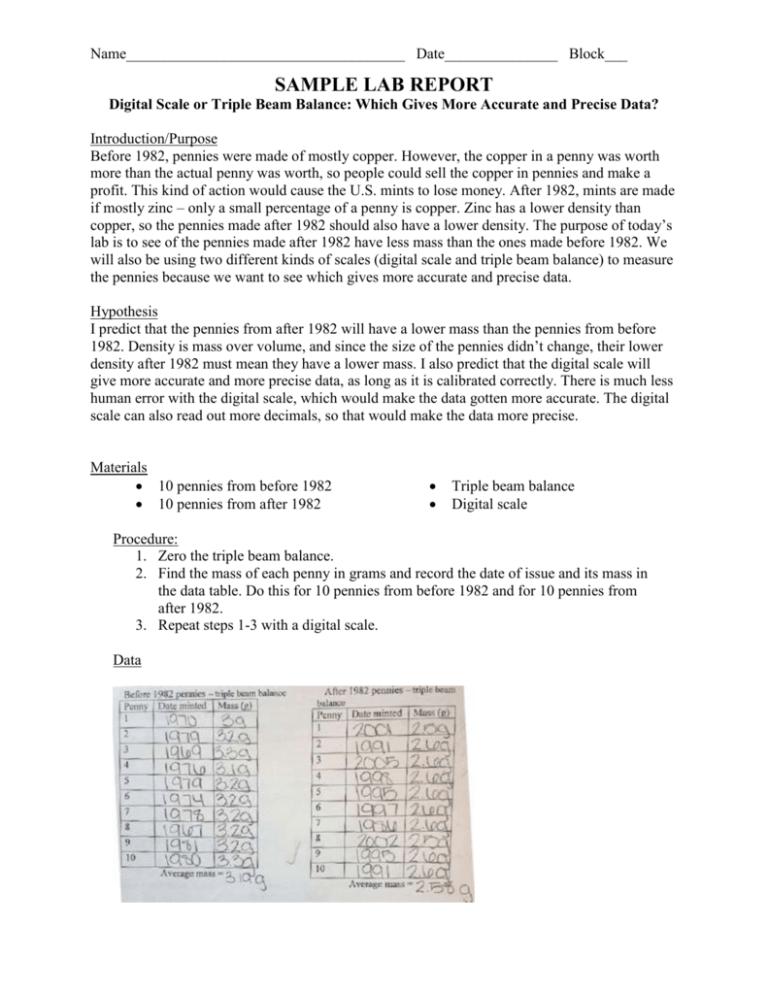
Name_____________________________________ Date_______________ Block___ SAMPLE LAB REPORT Digital Scale or Triple Beam Balance: Which Gives More Accurate and Precise Data? Introduction/Purpose Before 1982, pennies were made of mostly copper. However, the copper in a penny was worth more than the actual penny was worth, so people could sell the copper in pennies and make a profit. This kind of action would cause the U.S. mints to lose money. After 1982, mints are made if mostly zinc – only a small percentage of a penny is copper. Zinc has a lower density than copper, so the pennies made after 1982 should also have a lower density. The purpose of today’s lab is to see of the pennies made after 1982 have less mass than the ones made before 1982. We will also be using two different kinds of scales (digital scale and triple beam balance) to measure the pennies because we want to see which gives more accurate and precise data. Hypothesis I predict that the pennies from after 1982 will have a lower mass than the pennies from before 1982. Density is mass over volume, and since the size of the pennies didn’t change, their lower density after 1982 must mean they have a lower mass. I also predict that the digital scale will give more accurate and more precise data, as long as it is calibrated correctly. There is much less human error with the digital scale, which would make the data gotten more accurate. The digital scale can also read out more decimals, so that would make the data more precise. Materials 10 pennies from before 1982 10 pennies from after 1982 Triple beam balance Digital scale Procedure: 1. Zero the triple beam balance. 2. Find the mass of each penny in grams and record the date of issue and its mass in the data table. Do this for 10 pennies from before 1982 and for 10 pennies from after 1982. 3. Repeat steps 1-3 with a digital scale. Data Name_____________________________________ Date_______________ Block___ Error Calculations Before 1982 pennies with triple beam balance max min 3.3 3 0.075 g o Standard deviation: stdev 4 4 experiment al result accepted value 3.19 3.1 o Percent error 100 100 2.9% accepted value 3.1 After 1982 pennies with triple beam balance max min 2.6 2.5 0.025 g o Standard deviation: stdev 4 4 experiment al result accepted value 2.58 2.5 100 100 3.2% o Percent error accepted value 2.5 Before 1982 pennies with digital scale max min 3.12 3.01 0.0274 g o Standard deviation: stdev 4 4 experiment al result accepted value 3.072 3.1 100 100 0.9% o Percent error accepted value 3.1 After 1982 pennies with digital scale max min 2.55 2.45 0.025 g o Standard deviation: stdev 4 4 Name_____________________________________ Date_______________ Block___ o Percent error experiment al result accepted value 2.48 2.5 100 100 0.8% accepted value 2.5 Conclusion: Both parts of my hypothesis were correct. Both the triple beam balance and digitals scale gave the result that pennies made after 1982 had less mass than the pennies made before 1982. My data also shows that the digital scale gives more precise and more accurate data, which agrees with my original hypothesis. Although the standard deviations for the after 1982 pennies measured by both the triple beam balance and the digital scale were equal (both 0.025 g), the standard deviation for the before 1982 pennies measured by the digital scale (0.0274 g) was much less than the standard deviation for the same pennies measured by triple beam balance (0.75g). This difference between the standard deviations shows that the digital scale gave more precise data. I know that the digital scale gave more accurate data because the percent errors with the digital scale (0.9 % and 0.8%) were much lower than those of the triple beam balance (2.9% and 3.2%). I believe that any error came from human mistakes or equipment defects. For example, we had to zero our digital scale between each trial, so I don’t think it was the best digital scale we could have used. There is also a lot of human error when using the triple beam balance. It is difficult to move the sliders to exactly the right place, and it is hard to read the final result in a consistent manner. From this experiment, I learned that pennies made after 1982 have less mass than pennies made before that date. This experiment could be improved by perhaps using a third method to measure mass – maybe a balance scale or a more sensitive digital scale.
